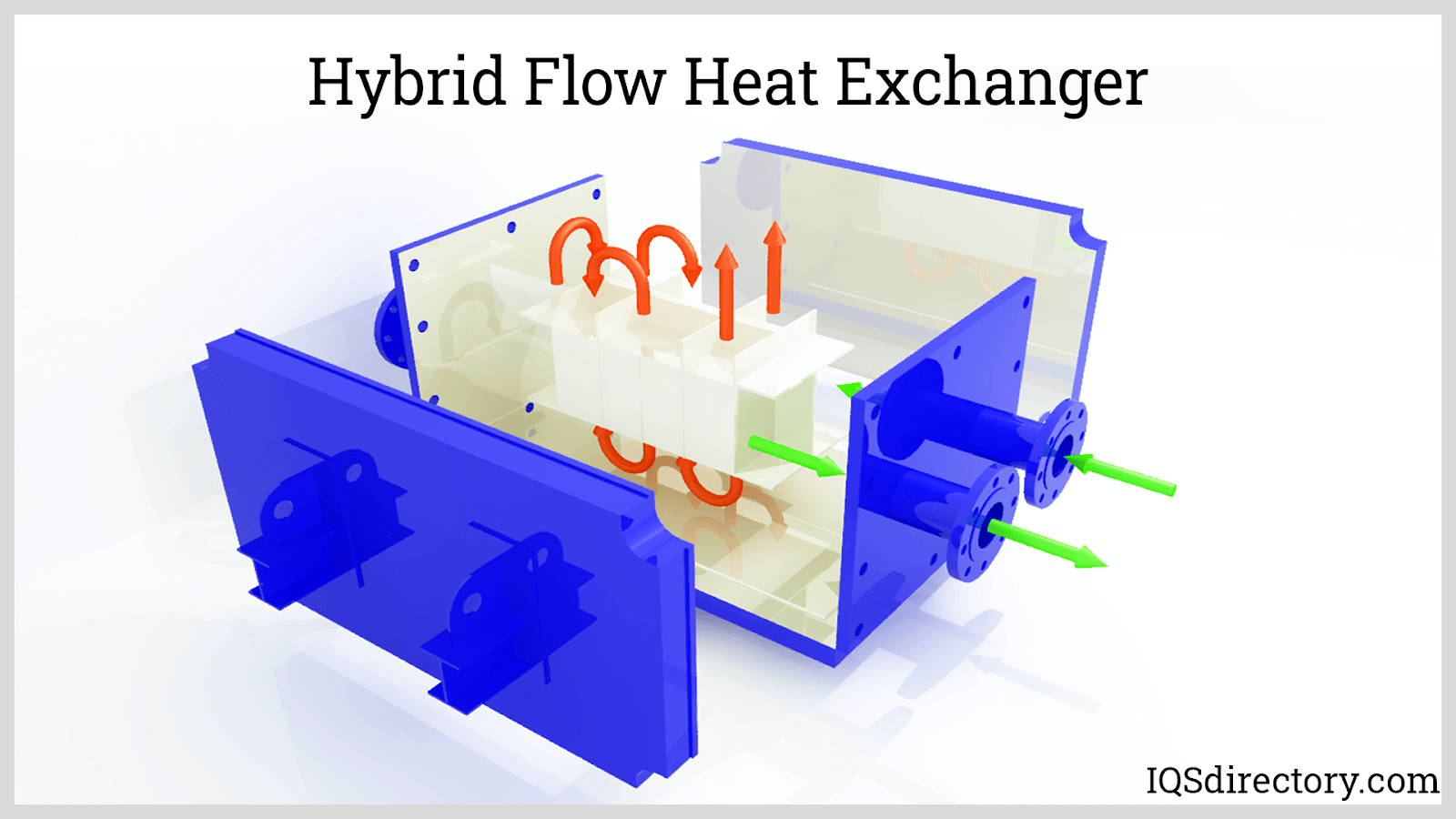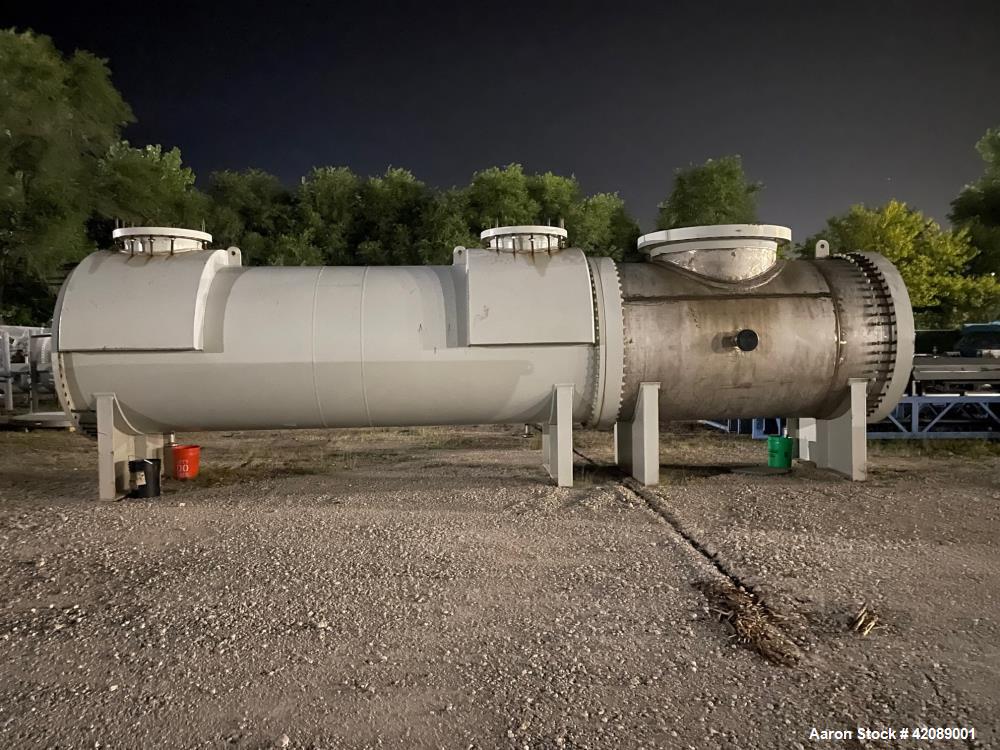How To Optimize Thermal Conductivity with DVS Heat Transfer Systems in Extreme Environments
The Duty of Heat Transfer Solutions in Sustainable Power Solutions for the Future
Heat transfer systems are important in the pursuit for lasting power services. They optimize thermal power monitoring, boosting the performance of sustainable technologies. By utilizing mechanisms like convection, transmission, and radiation, these systems lessen energy losses. Their role in solar thermal and geothermal applications is especially significant. As developments emerge, the possibility for additional innovations elevates essential questions concerning future power strategies. What growths will form the landscape of sustainable energy?
Comprehending Heat Transfer Systems

The Value of Thermal Energy Monitoring
Reliable thermal energy management is crucial for making the most of power efficiency and decreasing waste in various systems. By controling temperature level and optimizing Heat transfer processes, companies can noticeably reduce energy usage and operational prices. Efficient monitoring includes the application of sophisticated innovations and techniques that check and manage thermal conditions within systems, ensuring that power sources are made use of successfully. On top of that, appropriate thermal energy administration adds to reducing greenhouse gas emissions, lining up with worldwide sustainability objectives. It likewise improves system integrity and efficiency, leading to improved product top quality and longer equipment lifespan. Ultimately, prioritizing thermal power monitoring is a crucial step towards creating much more sustainable energy options and fostering a responsible method to energy intake in commercial and household contexts.
Applications of Heat Transfer in Renewable Resource
While different renewable resource sources assure sustainability, the efficient application of Heat transfer plays an important role in their effectiveness. In wind power systems, Heat transfer is used for turbine part air conditioning, boosting performance and long life. Geothermal power relies upon effective Heat exchange between the planet's subsurface and the liquid distributing in the system, taking full advantage of energy removal. Biomass energy processes additionally benefit from Heat transfer, as it assists in converting organic materials right into useful gas through pyrolysis and gasification. Furthermore, in hydropower, keeping optimal temperature levels in reservoirs can improve power output. Each of these applications shows the critical relevance of Heat transfer systems in enhancing renewable energy innovations, eventually adding to a much more lasting power future.
Enhancing Solar Thermal Power Effectiveness
As solar thermal power systems proceed to progress, boosting their effectiveness has actually come to be crucial for taking full advantage of power outcome. Breakthroughs in Heat transfer technologies, such as boosted thermal storage space materials and innovative Heat exchangers, play a significant duty in boosting performance. By making use of innovative products that have remarkable thermal conductivity, systems can transfer and record Heat more properly. Additionally, integrating monitoring systems that comply with the sunlight's path assurances that collection agencies get suitable solar exposure throughout the day. Using nanotechnology in solar absorbers can additionally enhance energy absorption prices. Moreover, including automated control systems assists control temperatures and take care of power circulation efficiently, causing decreased losses and enhanced general system efficiency. These enhancements pave the means for even more lasting solar thermal power remedies in the future.
Geothermal Heating: A Sustainable Option
Geothermal heating presents a sensible choice for lasting power, offering significant environmental advantages with minimized greenhouse gas discharges. Its efficiency and cost-effectiveness make it an eye-catching option to conventional furnace. However, obstacles associated with implementation has to be addressed to maximize its potential impact.
Ecological Benefits of Geothermal
Although typical heating techniques contribute considerably to greenhouse gas emissions, geothermal home heating presents a compelling option that reduces environmental influence. By utilizing the Earth's inner Heat, geothermal systems utilize a renewable resource resource, considerably decreasing dependence on fossil fuels. This technique produces minimal carbon discharges, making it a cleaner option for domestic and commercial heating. Additionally, geothermal systems promote energy performance, as they require much less energy compared to conventional heater. DVS Heat Transfer Systems. The utilization of geothermal power likewise assists in minimizing air contamination, enhancing neighborhood air high quality and public health. As a lasting solution, geothermal home heating sustains climate change reduction efforts, positioning itself as a vital element in the shift in the direction of a greener future
Effectiveness and Cost-Effectiveness
How does geothermal home heating determine up in regards to performance and cost-effectiveness compared to standard home heating systems? Geothermal home heating shows superior efficiency, typically achieving a coefficient of performance (COP) of 3 to 5, suggesting it generates three to 5 devices of Heat for each device of electricity consumed. This efficiency converts into reduced operating expenses, particularly in regions with steady geothermal resources. Preliminary installation expenses can be greater than traditional systems; nevertheless, long-term savings on energy costs and minimized upkeep expenditures can balance out these in advance financial investments. Additionally, many federal governments incentivize geothermal systems via rebates and tax credit histories, enhancing their cost-effectiveness. In general, geothermal heating arises as a lasting and economically viable option to more standard home heating remedies.
Implementation Difficulties and Solutions
Many obstacles can hinder the extensive application of geothermal furnace, despite their clear benefits as a sustainable power remedy. High go now first installation costs usually discourage property owners and financiers, making financing a substantial barrier. In addition, the geographical restrictions of ideal geothermal websites restrict availability in specific areas. Regional guidelines and allowing procedures can additionally make complex task growth, leading to hold-ups. Moreover, public awareness and understanding of geothermal systems remain reduced, preventing approval. To explanation attend to these difficulties, targeted education projects can boost public expertise, while federal government motivations can reduce financial concerns. Collaborating with regional authorities to enhance guidelines may promote smoother job authorizations, inevitably advertising the adoption of geothermal heating as a feasible, sustainable energy choice.
Innovations in Heat Transfer Technologies
Technologies in Heat transfer technologies play an important role in enhancing power effectiveness and sustainability. Advanced Heat exchangers and stage modification materials are at the forefront of these growths, supplying considerable improvements in thermal administration. These technologies not just maximize power use however additionally contribute to decreasing ecological impact in numerous applications.
Advanced Heat Exchangers
Advanced Heat exchangers play a necessary duty in enhancing power performance throughout various applications in lasting energy remedies. These gadgets promote the transfer of Heat between two or more fluids, substantially minimizing energy consumption in procedures such as commercial heating, air conditioning, and power generation. Advancements in products and design, such as making use of nanofluids and portable setups, have led to boosted thermal performance and decreased dimension demands. Additionally, developments in electronic monitoring and control systems enable maximized operation, additional boosting performance. By lessening waste Heat and making best use of energy recovery, advanced Heat exchangers add to decrease carbon impacts and support the shift toward ecologically friendly modern technologies. Their continued growth is essential for accomplishing international energy sustainability goals.
Stage Modification Products
The assimilation of stage adjustment products (PCMs) into Heat transfer modern technologies stands for a substantial improvement in power monitoring and effectiveness. PCMs soak up and launch thermal energy throughout their stage adjustments, allowing reliable temperature level law in structure products and power systems. By keeping excess Heat throughout optimal periods and launching it when need rises, PCMs add to fill shifting and power conservation - DVS Heat Transfer Systems. This capability improves the performance of eco-friendly energy systems, particularly in solar thermal applications. In addition, PCMs can boost the thermal comfort of indoor settings, lowering reliance on conventional heating and cooling approaches. As developments in PCM solutions remain to arise, their duty in lasting energy services is positioned to grow, offering encouraging opportunities for future study and application

Future Leads for Heat Transfer in Lasting Energy
As the need for lasting energy remedies remains to increase, the duty of Heat transfer systems is becoming progressively essential in forming future innovations. Technologies in designs and materials are expected to enhance effectiveness in Heat transfer, lowering power losses in numerous applications. The integration of advanced thermal storage systems, such as phase modification materials and thermochemical storage space, will certainly enable better administration of power sources. Research study into nanofluids and biomimetic Heat exchangers may even more enhance thermal performance. The adoption of clever modern technologies will certainly permit for real-time tracking and adaptive control of Heat transfer procedures. These advancements are positioned to anchor considerably add to the overall effectiveness and sustainability of power systems, leading the way for an extra energy-efficient future.
Often Asked Concerns
How Can Individuals Apply Heat Transfer Solution in the house?

Individuals can execute Heat transfer systems in your home by setting up energy-efficient appliances, utilizing radiant heat, and enhancing insulation. These steps enhance power effectiveness, reduce expenses, and advertise sustainable techniques in property settings.

What Are the Costs Connected With Mounting Heat Transfer Equipments?
The prices linked with mounting Heat transfer systems differ extensively, generally encompassing equipment, installation labor, and upkeep. Variables such as system kind, home size, and regional policies greatly affect the total expense included.
Are There Federal Government Rewards for Heat Transfer System Installations?
Government motivations for Heat transfer system setups vary by region and can include tax grants, credit scores, and discounts. These financial advantages aim to urge fostering, eventually advertising energy efficiency and lowering environmental impact within neighborhoods.
Just How Do Heat Transfer Systems Influence Energy Bills?
Heat transfer systems significantly affect energy expenses by optimizing power effectiveness. By boosting the transfer of Heat, these systems lower energy intake, leading to reduced utility expenses and creating a much more lasting method to power monitoring.
What Upkeep Is Needed for Heat Transfer Solutions?
Maintenance for Heat transfer systems includes normal examinations, cleaning of elements, examining fluid degrees, ensuring appropriate insulation, and changing worn parts. These tasks assist keep efficiency, stop break downs, and prolong the system's functional life-span.
These systems assist in the activity of thermal power from one medium to one more, enabling the transfer of Heat for energy, cooling, or heating generation functions. Geothermal energy depends on efficient Heat exchange in between the planet's subsurface and the liquid flowing in the system, maximizing energy extraction. Furthermore, geothermal systems advertise energy effectiveness, as they need much less power compared to traditional home heating systems. Advanced Heat exchangers play an important role in improving energy efficiency across various applications in sustainable power services. Heat transfer systems notably affect power expenses by maximizing power effectiveness.